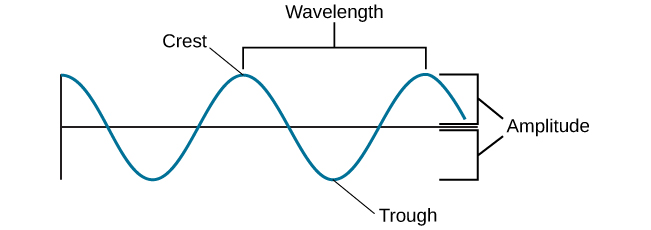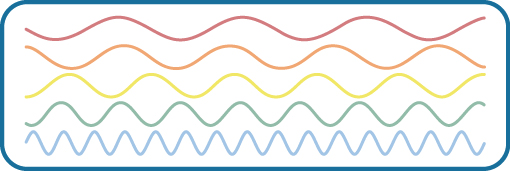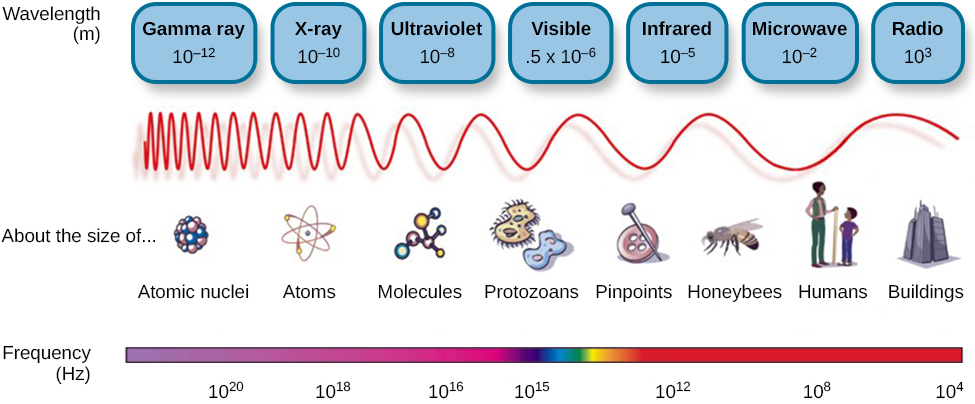Amplitude and Wavelength
Light travels in waves, and understanding a few basic properties of those waves helps explain how we perceive color and brightness. Two of the most important characteristics of any wave are its amplitude and wavelength.
amplitude and wavelength
The amplitude of a wave is the distance from the center line to the top point of the crest or the bottom point of the trough. Wavelength refers to the length of a wave from one peak to the next.

Wavelength is directly related to the frequency of a given waveform.
frequency
Frequency refers to the number of waves that pass a given point in a given time period and is often expressed in terms of hertz (Hz), or cycles per second. Longer wavelengths will have lower frequencies, and shorter wavelengths will have higher frequencies.

Light Waves
The visible spectrum is the portion of the larger electromagnetic spectrum that we can see. As Figure 3 shows, the electromagnetic spectrum encompasses all of the electromagnetic radiation that occurs in our environment and includes gamma rays, x-rays, ultraviolet light, visible light, infrared light, microwaves, and radio waves.
The visible spectrum in humans is associated with wavelengths that range from 380 to 740 nm—a very small distance since a nanometer (nm) is one-billionth of a meter. Other species can detect other portions of the electromagnetic spectrum. For instance, honeybees can see light in the ultraviolet range (Wakakuwa et al., 2007), and some snakes can detect infrared radiation in addition to more traditional visual light cues (Chen et al., 2012; Hartline et al., 1978).

Within the visible spectrum:
- Longer wavelengths appear as reds and oranges
- Medium wavelengths appear as greens and yellows
- Shorter wavelengths appear as blues and violets
Amplitude and Brightness
While wavelength determines color, amplitude affects how bright that color appears. Larger amplitudes = brighter or more intense light; smaller amplitudes = dimmer light.
